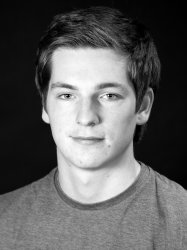Publications
4 results found
Cruise RD, Starr SO, Hadler K, et al., 2023, Triboelectric charge saturation on single and multiple insulating particles in air and vacuum, Scientific Reports, Vol: 13, ISSN: 2045-2322
Triboelectric charge transfer is complex and depends on contact properties such as material composition and contact area, as well as environmental factors including humidity, temperature, and air pressure. Saturation surface charge density on particles is inversely dependent on particle size and the number of nearby particles. Here we show that electrical breakdown of air is the primary cause of triboelectric charge saturation on single and multiple electrically insulating particles, which explains the inverse dependence of surface charge density on particle size and number of particles. We combine computational simulations with experiments under controlled humidity and pressure. The results show that the electric field contribution of multiple particles causes electrical breakdown of air, reducing saturation surface charge density for greater numbers of particles. Furthermore, these results show that particles can be discharged in a low pressure environment, yielding opportunities for improved industrial powder flows and dust mitigation from surfaces.
Rasera JN, Cruise RD, Cilliers JJ, et al., 2022, Modelling the tribocharging process in 2D and 3D, Powder Technology, Vol: 407, Pages: 1-12, ISSN: 0032-5910
Many discrete element method (DEM) tribocharging models presented in the literature rely on ill-defined or poorly quantified charging parameters. This work presents a straightforward experimental method to quantify key parameters, namely the charge transfer limit, Γ, and the charging efficiency, κc. These parameters are then used in both 2D and 3D DEM simulations to evaluate the applicability of faster 2D models to tribocharge modelling. Both the 2D and 3D models are found to perform well against the experimental data for single-contact and single-particle, multi-contact systems. However, the 2D model fails to produce good agreement with experimental data for multi-contact, multi-particle systems. This approach for determining experimentally the parameters for the DEM tribocharging model is found to be effective and produces good agreement between simulated and experimental data. This method will improve and simplify the DEM modelling of triboelectric charging in dry material handling processes.
Budzyń D, Tuohy E, Garrivier N, et al., 2022, Lunar Dust: Its Impact on Hardware and Mitigation Technologies, Aerospace Mechanisms Symposium
Cruise RD, Hadler K, Starr SO, et al., 2022, The effect of particle size and relative humidity on triboelectric charge saturation, Journal of Physics D: Applied Physics, Vol: 55, Pages: 1-14, ISSN: 0022-3727
Triboelectric charging is present in numerous technologies and everyday processes, providing both problems and opportunities. Despite this, there is no generalised model for the amount of charge that will build up on surfaces in contact. Here, we develop a new model for the saturation charge on triboelectrically charged spherical insulators, accounting for both equalisation of surface potentials and electrical breakdown of the surrounding medium. Experiments are conducted under controlled temperature and humidity using two independent methods, measuring the saturation charge on polymer spheres contacting grounded stainless steel. The results verify our equalisation of surface potentials model which describes how saturation charge density increases for smaller particle sizes. Key triboelectric properties are calculated: The estimated saturation charge on a flat surface and the equalisation potential between different materials, which can be used to predict charge saturation and quantify a triboelectric series. The transition radius below which electrical breakdown will cause saturation of charge is also calculated theoretically. Limitations to the model are demonstrated experimentally. As particle size reduces, a point is reached at which the electrostatic adhesion of particles to the grounded charging surface prevents further charge build-up. Furthermore, it is found that the saturation charge for smaller particles in humid conditions is greatly reduced. These calculations, and the demonstrated procedure, can serve as a tool for the design of technologies and processes influenced by triboelectric charge build-up, including triboelectric nanogenerators and electrostatic mineral separators.
This data is extracted from the Web of Science and reproduced under a licence from Thomson Reuters. You may not copy or re-distribute this data in whole or in part without the written consent of the Science business of Thomson Reuters.

